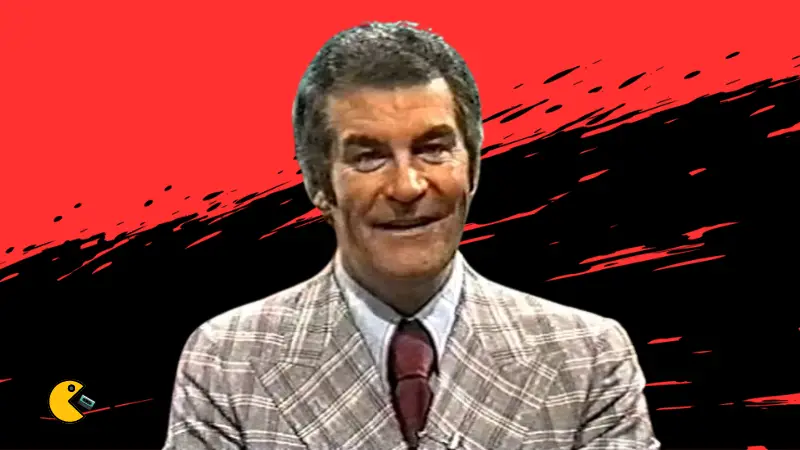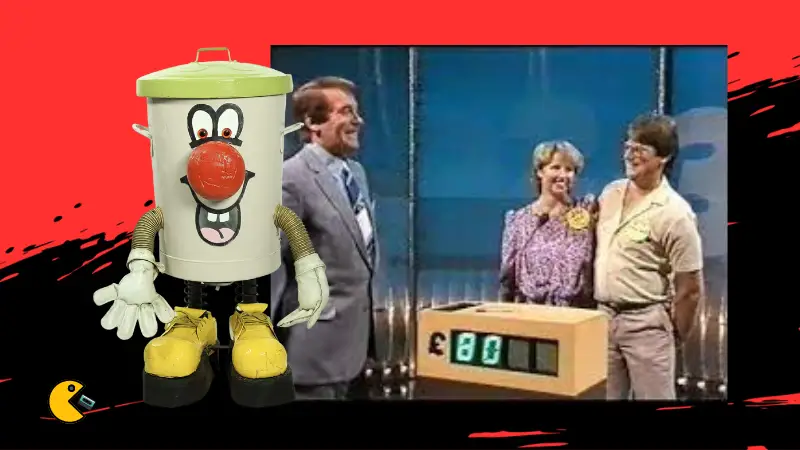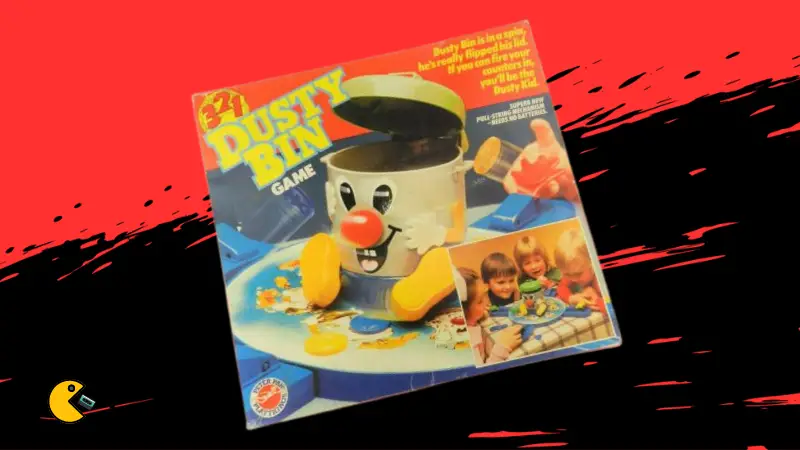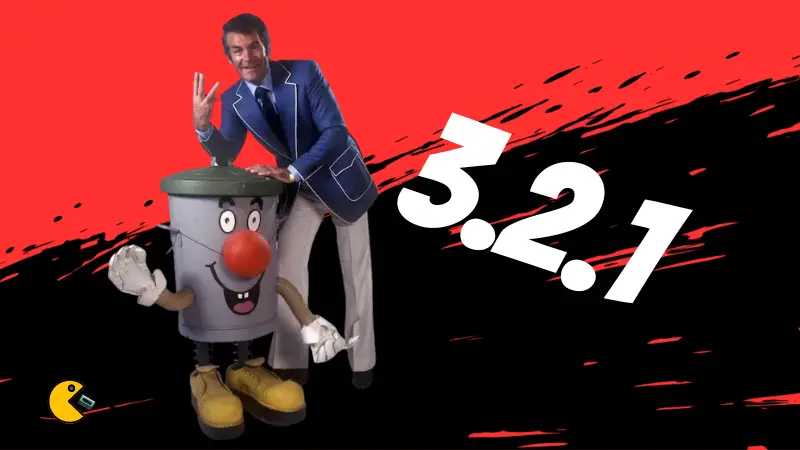Back in the 1980s there was many great games shows on TV to entertain all the family. One such gem is the ever-intriguing and eternally entertaining 3 2 1 with Dusty Bin, a British game show that graced the screens from 1978 to 1988. With its quirky mixture of comedy, variety, quiz, and even pantomime, it offered an unusual treat that audiences across the country relished.
The charm of 3-2-1 was not limited to its innovative format, nor was it confined to the show’s charismatic host Ted Rogers. A significant portion of the allure lay in the form of a character, who despite being inanimate, managed to capture hearts and become a cultural icon – the Dusty Bin. Modelled after a dustbin, this adorable mascot often stole the show with its unpredictability and humorous antics.
Exploring the Game Show 3 2 1
The idea for 3 2 1 was conceived by Yorkshire Television and hit the airwaves on September 29, 1978. It introduced an unconventional blend of game show elements which ranged from general knowledge quizzes to physical competitions. Each episode was presented as a performance that mixed a festive atmosphere with a tense competition.
The show was masterfully hosted by comedian Ted Rogers, who served as the amiable guide, shepherd, and entertainer for both the contestants and audiences alike. Rogers’ witty banter, knack for captivating the audience, and rapport with contestants greatly contributed to the show’s overall appeal.
The reception to 3-2-1 was phenomenal. It quickly became a favourite among households, with millions of viewers tuning in weekly. It wasn’t just a game show, it was an event, a spectacle of light-hearted fun and nail-biting excitement that captivated the nation.
More 80s Nostalgia:
The Host – Ted Rogers
Ted Rogers was a British comedian and the much-loved host of the 3-2-1 game show. Born on 20th July 1935 in Kennington, London, Rogers began his career in show business as a boy soprano in the late 1940s. However, he gained major recognition and acclaim in the late 1970s and 80s when he began hosting 3-2-1.
As the host, Rogers was an integral part of the show’s appeal. His charisma and jovial personality shone through the screen, making him a beloved figure among viewers. He had a unique ability to connect with both the contestants on the show and the audience at home, which was a key factor in the show’s success.

Rogers was also known for his quick wit and humour, which added a lively and entertaining dynamic to the show. He had a knack for injecting comedic moments into the show, which made the episodes all the more enjoyable to watch. Rogers would often engage in banter with the contestants, lightening the mood and creating an atmosphere that was both fun and relaxed.
Another aspect of Rogers’ hosting that stood out was his signature hand gesture, which he used while explaining the rules of the game. This involved him rapidly folding down three fingers to symbolise the show’s countdown “3-2-1”, a gesture that became iconic in its own right.
Despite his death in 2001, Ted Rogers left an indelible mark on British television. His contribution to the 3-2-1 game show remains a cherished part of British TV history.
The 3 2 1 Mascot – The Iconic Dusty Bin
Dusty Bin was more than just a character in 3-2-1 – it was the game’s most iconic symbol. Introduced as the show’s mascot, Dusty Bin was an endearing robotic dustbin whose primary role was to serve as a booby prize. Contestants who solved the riddles incorrectly would “win” the Dusty Bin, which symbolized that they were leaving with nothing but a metal trash bin.
However, this ostensibly unfortunate prize was ironically a fan favourite. The unpredictability of Dusty Bin’s appearances, coupled with the inherent suspense of the riddles, made for captivating viewing. Dusty Bin quickly became a national sensation, seeping into the cultural fabric of the 80s and becoming an emblem of the show’s quirky charm.

The Gameplay of 3 2 1
The game was composed of three parts that gave the show its name. The first part was a quiz where couples competed to answer questions. The second part consisted of variety acts, and the third part, the most thrilling of them all, was the elimination game.
Dusty Bin played a pivotal role in the final stage. Contestants had to decipher cryptic clues that hinted at the prize they could win or lose. Choosing the Dusty Bin meant walking away with nothing but a shiny bin as a memento of their journey. It added a degree of unpredictability and tension to the show that was unmatched.
The Legacy of Dusty Bin
Dusty Bin’s appeal transcended the boundaries of the show. It became an endearing cultural symbol, from merchandise to references in popular culture. The Dusty Bin character also influenced the creation of other quirky mascot prizes in game shows, helping to establish a new genre of humorous, suspenseful television.
The enduring appeal of Dusty Bin can be traced back to its ability to tap into the nation’s love for humour and a good twist. Its popularity saw an influx of Dusty Bin merchandise, including board games and toys, which became staple gifts for birthdays and Christmas celebrations.

Dusty Bin and 3 2 1
From its innovative gameplay to its magnetic host, 3-2-1 was an absolute phenomenon. However, the legacy of this show is most encapsulated by the character of Dusty Bin. Despite being a dustbin on wheels, Dusty Bin embodied the spirit of 3-2-1 – unpredictable, fun, and always leaving the audience wanting more. The cultural impact of this simple robotic mascot is a testament to the creativity and charisma that made 3-2-1 a staple of British television.
In the world of game shows, the enduring legacy of 3 2 1 and Dusty Bin stand as a testament to innovation, charm, and the magic of television. The memory of this humble Dusty Bin continues to bring smiles to faces, young and old alike, reminding us of a time when winning a metallic bin was as exciting as winning the jackpot.

